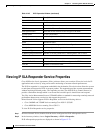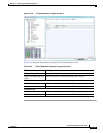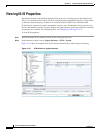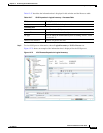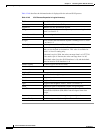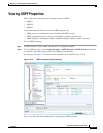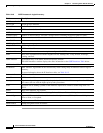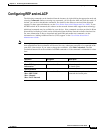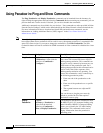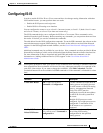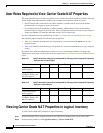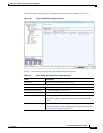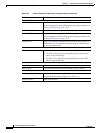
12-120
Cisco Prime Network 4.0 User Guide
OL-29343-01
Chapter 12 Monitoring Carrier Ethernet Services
Using Pseudowire Ping and Show Commands
Using Pseudowire Ping and Show Commands
The Ping Pseudowire and Display Pseudowire commands can be launched from the inventory by
right-clicking the appropriate node and selecting Commands. Before executing any commands, you can
preview them and view the results. If desired, you can also schedule the commands.
Additional commands may be available for your devices. New commands are often provided in Prime
Network Device Packages, which can be downloaded from the Prime Network software download site.
For more information on how to download and install DPs and enable new commands, see the
information on “Adding Additional Device (VNE) support” in the Cisco Prime Network 4.0
Administrator Guide.
Note You might be prompted to enter your device access credentials while executing a command. Once you
have entered them, these credentials will be used for every subsequent execution of a command in the
same GUI client session. If you want to change the credentials, click Edit Credentials. The Edit
Credentials button will not be available for SNMP commands or if the command is scheduled for a later
time.
Command Navigation Description
Ping Pseudowire Logical Inventory >
Pseudowires > right-click the
interface > Commands >
Configure >
Use the Ping Pseudowire command to ping the
peer router with a tunnel ID from a single or
multisegment pseudowire. This command can
be used to verify connectivity between any set
of PE routers in the pseudowire path. For a
multisegment pseudowire this command can be
used to verify that all the segments of the
multisegment pseudowire are operating. You
can use this command to verify connectivity at
the following pseudowire points:
• From one end of the pseudowire to the
other
• From one of the pseudowires to a specific
segment
• The segment between two adjacent PE
routers
You can choose to ping the peer router by
default or provide the IP of the required
destination router to ping.
Display
Pseudowire
Logical
Inventory > Pseudowire >
right-click the required
interface > Commands >
Show > Display Pseudowire
Use the Display Pseudowire command to show
the MPLS Layer 2 (L2) transport binding using
tunnel identifier. MPLS L2 transport binding
allows you to identify the VC label binding
information. This command can be used to
display information about the pseudowire
switching point.



